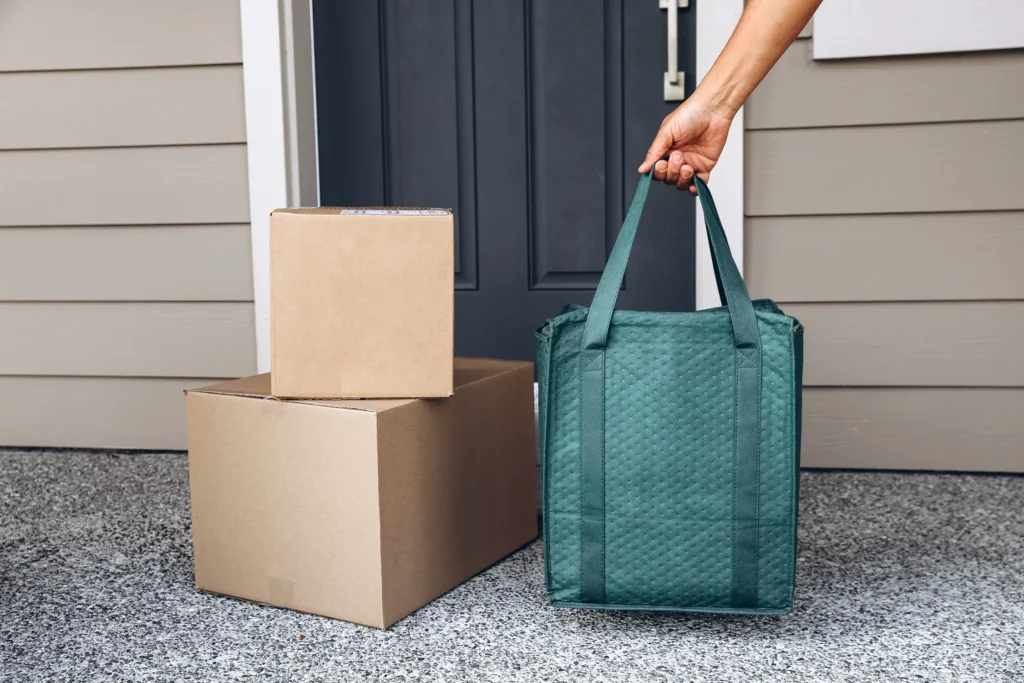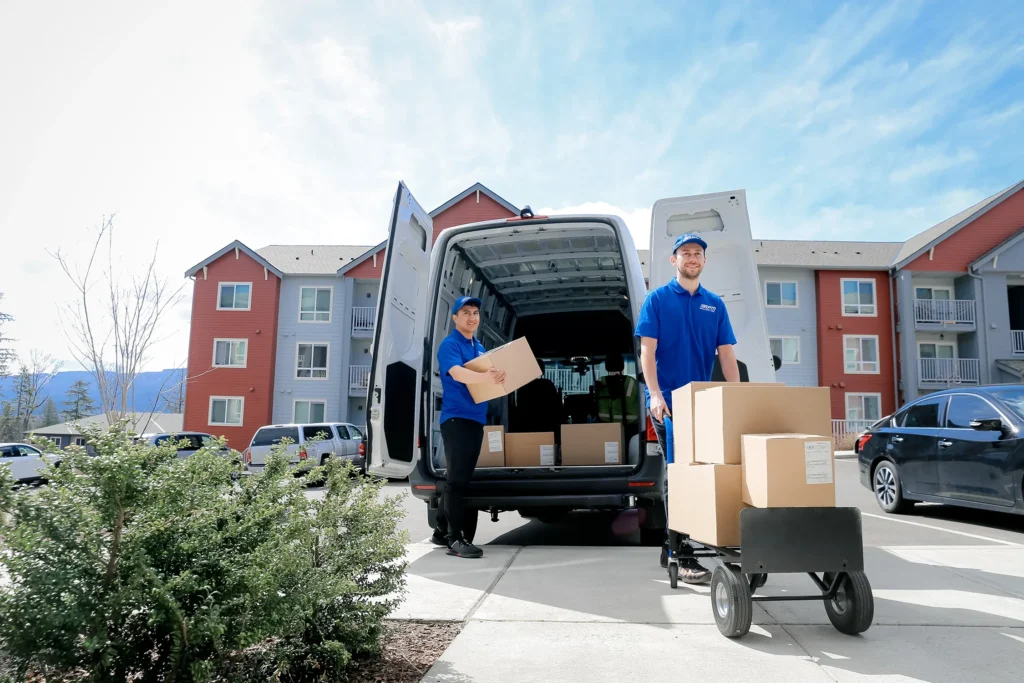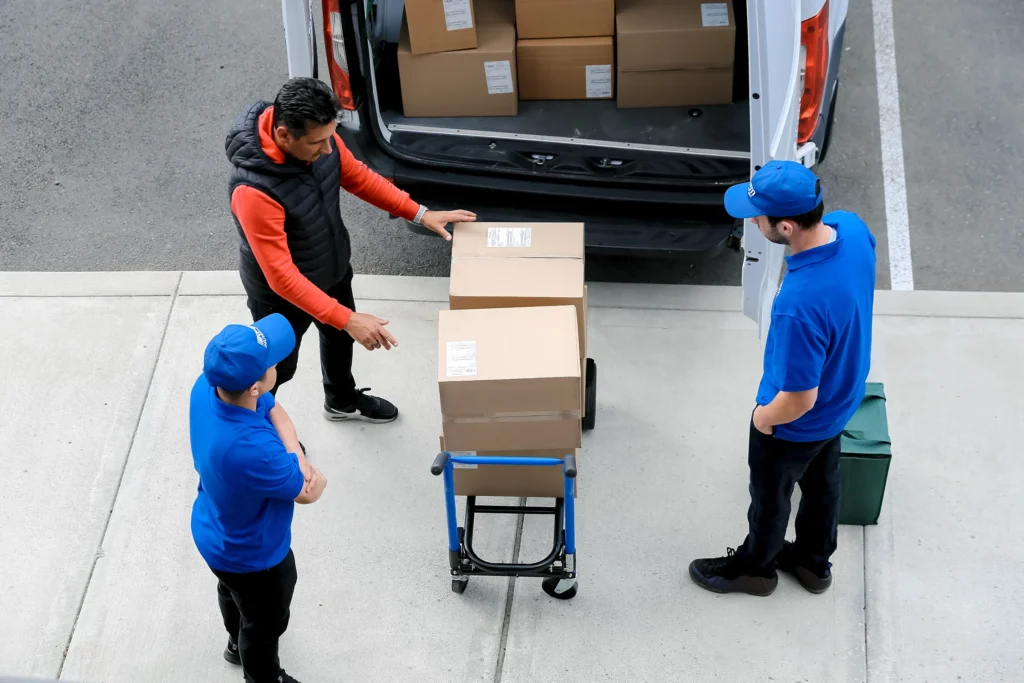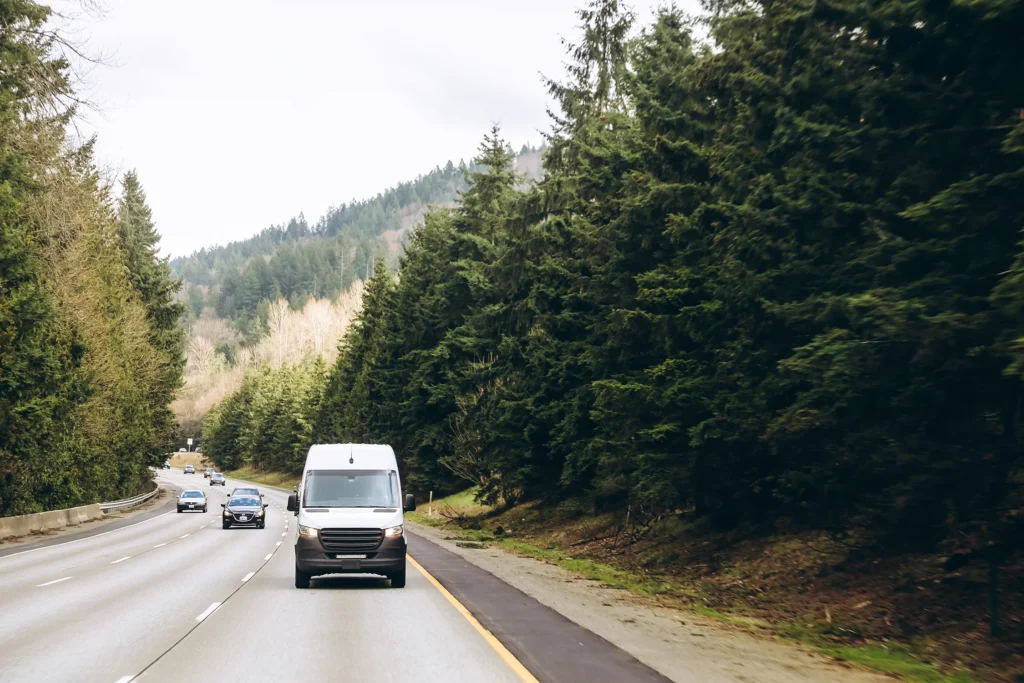Understanding the Last Mile: Challenges and Solutions in Delivery Services

Last-mile delivery is the final leg of the delivery process in which goods are transferred from a distribution center or a transportation hub to the final destination, which is often at the customer’s doorstep.
Last-mile delivery is critical for small and medium-sized businesses (SMBs). The practical and affordable management of the final mile is critical for these organizations in optimizing the overall delivery process. SMBs may cut transportation costs, increase delivery time, and ultimately improve their market competitiveness by managing last-mile logistics.
Furthermore, the last mile allows firms to leave a lasting impression on their customers. Positive client experiences can be greatly enhanced by friendly and professional delivery employees who give individualized care. Businesses can create customer trust and loyalty by delivering orders on time and with care, resulting in repeat purchases and favorable word-of-mouth recommendations.
The Unique Challenges Small and Midsize Businesses Face in Delivery Services
Small and medium-sized businesses have particular obstacles in service delivery, which can substantially influence their operations and competitiveness. Companies may consider working with third-party logistics providers, relying on local delivery networks, adopting smart delivery tactics, and focusing on customer experience.
Managing High Delivery Volumes
Due to increased client demand, small and medium-sized firms face major hurdles in dealing with rising delivery quantities. Among the hurdles are capacity limits, inventory management difficulties, fulfillment efficiency, scaling operations, cost management, the complex nature of last-mile logistics, and maintaining high levels of customer satisfaction.
SMBs frequently have resource limits and operational constraints, making it difficult to keep up with rising demand while being efficient and achieving consumer expectations. To maintain seamless operations and customer satisfaction, addressing these challenges requires careful planning, process improvement, technology utilization, and potentially cooperation with third-party logistics providers.

Balancing Cost and Quality
On the one hand, businesses must keep delivery costs low in order to remain competitive and retain profit margins. On the other hand, they must maintain high-quality services to exceed client expectations and ensure contentment. To achieve this balance, logistics procedures must be optimized, shipping costs must be negotiated, technology must be used for efficiency gains, and creative solutions such as partnering with local distribution networks or using smart delivery techniques must be sought.
To find the correct balance and maintain market competitiveness, business owners must carefully examine cost-effectiveness while prioritizing customer satisfaction.
Limited Resources and Infrastructure
Small and medium-sized firms have considerable challenges due to limited resources and infrastructure, which impedes delivery efficiency and timeliness. These businesses frequently need more financial resources, smaller buildings, and limited access to significant warehouse or distribution networks.
Such constraints can lead to inventory management issues, limited storage capacity, and a lack of specialized delivery infrastructure. As a result, companies may need help to handle rising delivery volumes, endure order fulfillment delays, and encounter difficulties optimizing routes for timely deliveries.
Integration with Existing Processes
New systems must be carefully planned and coordinated to achieve a smooth transition. Businesses face challenges in aligning the new delivery procedures with their existing workflows, training staff on the new systems, and integrating the technology with their current software and infrastructure. Furthermore, personnel accustomed to regular habits may be resistant to change.
To minimize interruptions and enhance the benefits of the new delivery systems or processes, complete change management techniques, good communication, proper training, and a phased deployment approach are required.

Last Mile Delivery: A Boon for Small and Midsize Businesses
Last-mile delivery is beneficial to small and medium-sized enterprises for a variety of reasons. For starters, it enables businesses to reach out to their customers directly and effectively, allowing them to compete in a fast-paced industry. SMBs may cut transportation costs and enhance delivery speed by managing last-mile logistics, ultimately streamlining their overall delivery process.
Furthermore, last-mile delivery is critical in increasing customer satisfaction. SMBs may fulfill customers’ high expectations by providing personalized services, various delivery alternatives, and real-time tracking systems. This, in turn, contributes to the development of trust, loyalty, and positive word-of-mouth referrals, ultimately boosting the growth and success of even the tiniest company in a competitive business landscape.
Streamlining Delivery Operations
Businesses may handle larger volumes with more precision and speed by streamlining the final leg of the delivery process. Last-mile delivery guarantees that items are delivered in the most inexpensive and timely manner possible by optimizing routes and schedules. Applying technology, such as real-time tracking and automated order management systems, allows smooth cooperation and error reduction.
Businesses can successfully scale their operations to meet growing client demand by employing smart distribution techniques and leveraging local delivery networks. Overall, last-mile delivery is critical in handling high delivery volumes by improving operational efficiency and ensuring customer satisfaction.
Optimizing Costs with Last Mile Delivery
Businesses can cut delivery costs while maintaining on-time delivery and service standards by optimizing routes, deploying technology for real-time tracking and communication, and leveraging data analytics. Cost-efficient route planning, resource utilization, and timely client notifications are made possible by streamlined operations and excellent logistics management.
Reliable last-mile delivery systems allow greater coordination among all supply chain members, such as suppliers, warehouses, and delivery workers, resulting in smoother workflows and fewer errors. Businesses can save money while maintaining great service quality and customer happiness.
Leverage Technology for Better Infrastructure
Last-mile delivery technology, such as artificial intelligence route planning and real-time monitoring, can efficiently overcome the barrier of limited infrastructure. Route planning algorithms powered by AI can optimize delivery routes depending on a variety of criteria, such as traffic conditions, delivery windows, and vehicle capacity, increasing efficiency even in locations with inadequate infrastructure.
Real-time tracking solutions give organizations visibility into the delivery process, allowing them to monitor shipments and manage any possible delays or issues as soon as they arise. Businesses can offset the restrictions of limited infrastructure by leveraging technology, assuring timely deliveries, optimizing resource allocation, and improving overall delivery performance. This enables small and medium-sized businesses to overcome infrastructural constraints and serve their clients with efficient last-mile delivery services.
Easy Integration and Scalability
Integrating last-mile delivery solutions into current systems is extremely simple, and these solutions may expand with the business’s growth. Many last-mile delivery companies give flexible integration options, enabling businesses to integrate their existing order management, inventory, and customer care systems. Businesses may swiftly implement last-mile delivery functions using APIs and defined integration protocols without disturbing their current processes.
As the company grows, these systems may readily scale to meet rising delivery volumes and changing consumer demands. The scalable nature of last-mile delivery solutions ensures that businesses can adapt and grow without encountering significant integration challenges, whether it’s bringing more delivery providers, extending delivery zones, or incorporating advanced features like real-time tracking and automated notifications.

Conclusion
SMBs confront specific delivery-related issues, such as limited resources, infrastructure constraints, and the battle to balance low delivery costs with high-quality services. Last-mile delivery, on the other hand, provides plausible solutions. It improves customer satisfaction, streamlines processes, and allows SMBs to compete in the market.
Last-mile delivery helps handle high volumes, save costs, and maintain service quality by using optimized routes, real-time tracking, and efficient coordination. The future of last-mile services for SMBs appears bright, thanks to technological improvements. By embracing technology, SMBs may overcome infrastructure limits, scale their operations, and enhance efficiency.
RPM Delivery offers tailored last-mile delivery solutions for all kinds of businesses. Whether you are big or small, we guarantee a smooth and timely delivery of goods to your partners or customers. Feel free to contact us and explore our services.